Interview with Solianna Meaza, Global Policy and Advocacy Director at FHI 360. Solianna leads global policy and advocacy for FHI 360, including on the global nutrition agenda. FHI 360 focuses global nutrition advocacy through two key projects: the 1,000 Days initiative, focused on the pivotal period for good nutrition from conception to 2 years of age, and the Women’s Nutrition Project, which shines a light on the link between gender inequality and malnutrition with the Gender Nutrition Gap campaign. She has previously worked for international development organizations including the Eleanor Crook Foundation, United States Agency for International Development (USAID) as well as for the US House of Representatives.
1. How are the fight against malnutrition and the fight for women’s rights linked?
Malnutrition for women and girls is deeply rooted in gender inequality and how economic, social, and cultural circumstances interact. For example, girls are less likely to complete basic education than boys, which in turn affects their earning potential; women carry out three-quarters of unpaid care work globally, which holds them back from paid employment; and household dynamics may push women and girls to eat less, last, and worse. All of this drives gender inequalities in income and food and nutrition security. Improving women’s and girls’ nutrition requires more than the availability of nutritious foods. It takes increased empowerment, income earning potential, and decision-making ability. It takes gender equity. Nutrition is a feminist issue.
We define the Gender Nutrition Gap as the way in which systemic challenges – the lack of recognition of women’s and girls’ unique biological needs, the obstacles they face in accessing food and services, and harmful social norms – impact their health and economic outcomes.
2. What is needed in order to close this gap?
In partnership with our coalition of Gap Closers, in 2023 we released Closing the Gender Nutrition Gap: An Action Agenda for Women and Girls, which calls on decision-makers to improve policies and increase investment for women’s and girls’ nutrition. In practice, it lists concrete policy action in four areas:
- increase access to healthy diets
- rethink the care system, to address the discriminations women and girls are facing when seeking care,
- advance gender equality and
- set up a multisectoral policy environment for women’s and girls’ nutrition.
Women and girls are disproportionately affected by malnutrition – yet women’s and girls’ nutrition are not prioritized in policy and programs. The Action Agenda seeks to address that.
“At the heart of this agenda is unequivocal recognition that prioritizing optimal nutrition for women and girls of all ages opens pathways to greater opportunities. Good nutrition creates a positive ripple effect for women, their communities, and nations.” (Closing the Gender Nutrition Gap: An Action Agenda for Women and Girls).
3. What commitments should the international community make to meet the challenges of women’s nutrition, just a few months ahead of the next N4G Summit?
FHI360 is part of a group of civil society organizations proposing a set of high-impact, actionable recommendations for the N4G on nutrition and gender equality.
Ahead of the Nutrition for Growth Summit in Paris, we call on governments, international organizations, philanthropies, and businesses to:
- Invest in nutrition security and healthy diets for women and girls. Almost 40% of the world’s population cannot afford a healthy diet. Focusing on women and girls has a multiplier effect: it advances overall gender equality, breaks the transgenerational cycle of malnutrition, and combats overweight and obesity, which predominantly affect women and girls.
- Support women’s and girls’ social and economic empowerment to address the deep-rooted causes of malnutrition. Access to healthy, nutritious food is not enough; access to care, education and women’s leadership in food systems are also part of the solution.
- Further integrate nutrition into health services for all women and girls across their full life cycle. Women have a right to health, irrespective of their reproductive status. A stronger focus on nutrition within health services could save 3.7 million lives by 2025, according to the World Health Organization.
- Leverage social protection to improve women’s and girls’ nutrition. Social protection systems must acknowledge that women and girls bear a disproportionate burden of poverty and address the intersecting forms of vulnerability and inequality women and girls face throughout their life.
- Invest in data for action and accountability. There are vast data gaps on women’s and girls’ nutrition that need to be closed with data collection systems that are recurrent and that disaggregate by sex and age. This data also needs to be actively used to dramatically improve visibility, decision-making, actions, and accountability for women’s and girls’ nutrition.



